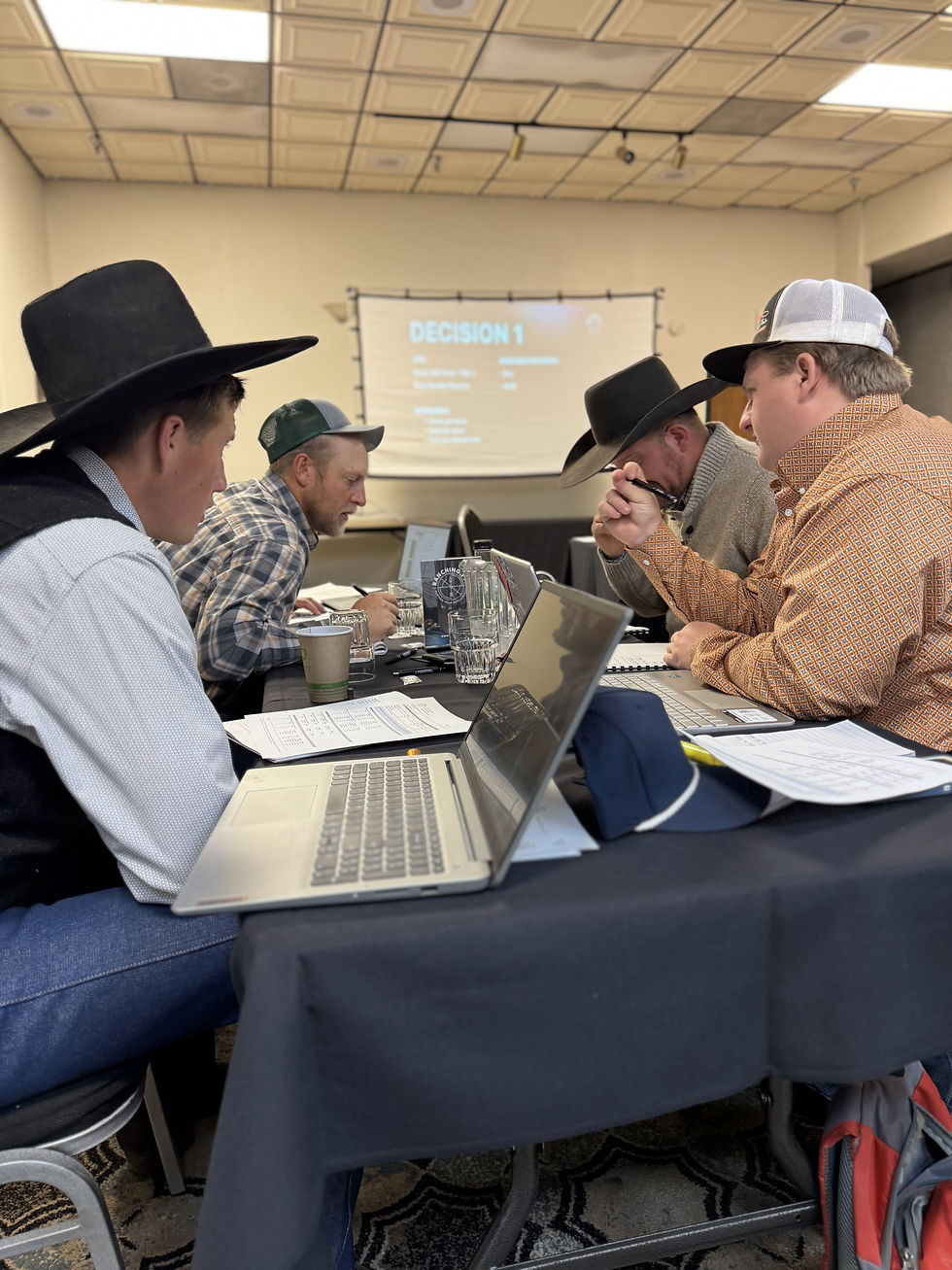Why Simulations Work: The Brain Science Behind Better Ranch Decisions
- Ranching.FYI

- Oct 21
- 3 min read
When you hear the word simulation, you might picture pilots in flight simulators or soldiers in combat drills — not people in boots and jeans sitting at a computer. But the truth is, the same brain science that trains fighter pilots and firefighters applies perfectly to ranching.
Because ranching isn’t just physical work. It’s decision work.
And our brains are built to learn decision-making faster through experience — especially simulated experience — than through lectures, spreadsheets, or books.
Your Brain Is a Prediction Machine
Every decision you make on the ranch — when to sell, how many to keep, which pairs to sort — happens inside a three-pound organ that runs on patterns.
The human brain is constantly scanning for familiar cues so it can predict what happens next. When those predictions are right, you feel confident. When they’re wrong, you feel stress, frustration, and doubt.
That’s why experience is such a powerful teacher — it helps your brain refine those prediction patterns, but experience in ranching is expensive. You can’t afford to “practice” drought, debt, or poor trades in real life.
That’s where simulations come in.
Simulations: The Shortcut to Real Experience
A simulation tricks the brain — in a good way. It gives your nervous system all the signals of experience without the real-world risk.
When you run a simulation, your brain responds as if the decisions are real. Heart rate increases, focus sharpens, emotions kick in. That’s the exact environment where learning sticks.
Neuroscientists call this stress inoculation. By experiencing small doses of challenge in a controlled setting, your brain learns to stay calm and think clearly under pressure.
In other words: simulations make stress familiar, so it doesn’t hijack your decision-making when it counts.
From Knowledge to Skill
You can’t become a better roper by reading a manual. You have to swing the rope.
Decision-making is the same way. You can read about Sell➧Buy Marketing, inventory management, or cash flow all day long — but until you do it, your brain doesn’t wire those concepts into memory.
Simulations move ranchers from knowing to doing. They give you instant feedback:
Did that trade increase your gross margin?
Did you leave grass on the table?
Did emotion override your numbers?
Those quick feedback loops are what build skill, not just knowledge. The brain learns fastest when mistakes are small, frequent, and safe — not when they cost thousands of dollars.
Why Ranchers Need Simulations Now
The pace of change in ranching has never been faster. Markets move daily. The weather swings weekly. Costs shift monthly.
You don’t have time to learn every lesson the hard way. Simulations give you repetitions without the wrecks.
They build what psychologists call adaptive expertise — the ability to make decisions in new situations using principles, not memory. That’s what separates a reactive operator from a strategic manager.
And just like the best pilots or surgeons, you can train your brain to run those mental drills before you ever step into the real-world scenario.
The Bottom Line
Simulations aren’t games — they’re brain training. They’re how you turn data into instinct. They’re how you learn to trust your numbers more than your nerves.
Every time you walk through a scenario, your brain rewires just a little — faster pattern recognition, calmer under stress, more clarity when things get noisy.
That’s not theory. That’s neuroscience. And in ranching, it’s the edge between surviving and scaling.
Your Move
If you’re serious about making better decisions faster, don’t wait for “real life” to teach you. Come practice in a safe place — where mistakes are cheap and lessons are priceless.
That’s exactly why we built the Ranching.FYI SIMs: to give ranchers a flight simulator for the business side of ranching. Because your brain is your most valuable tool — it deserves a training program too.
